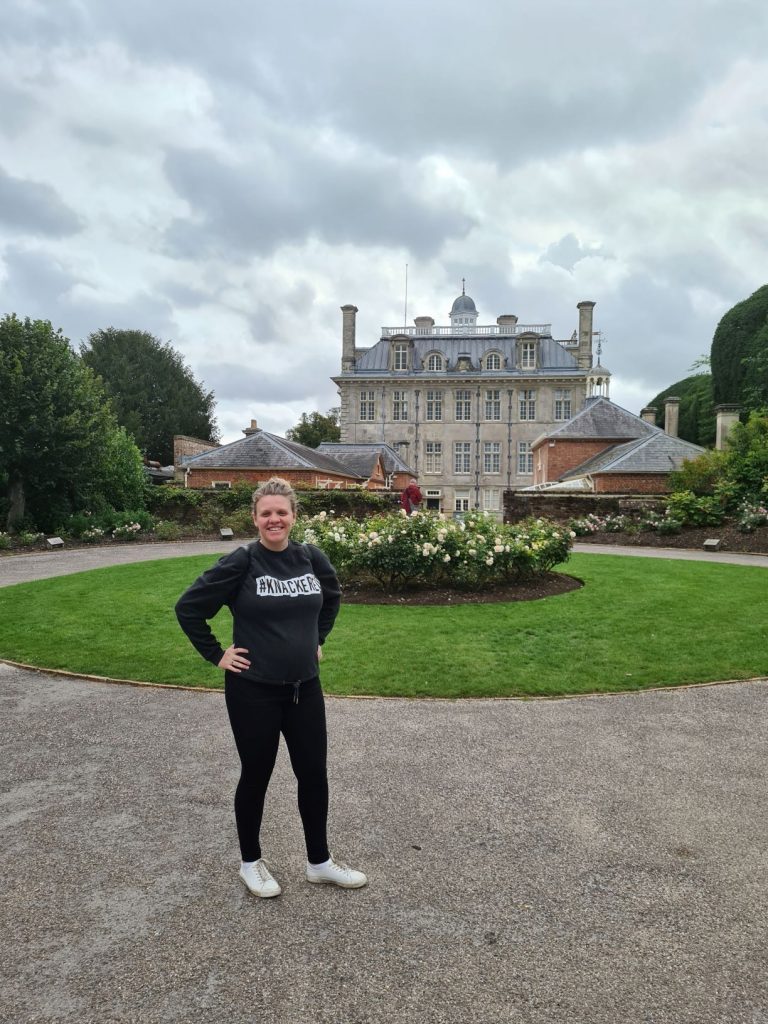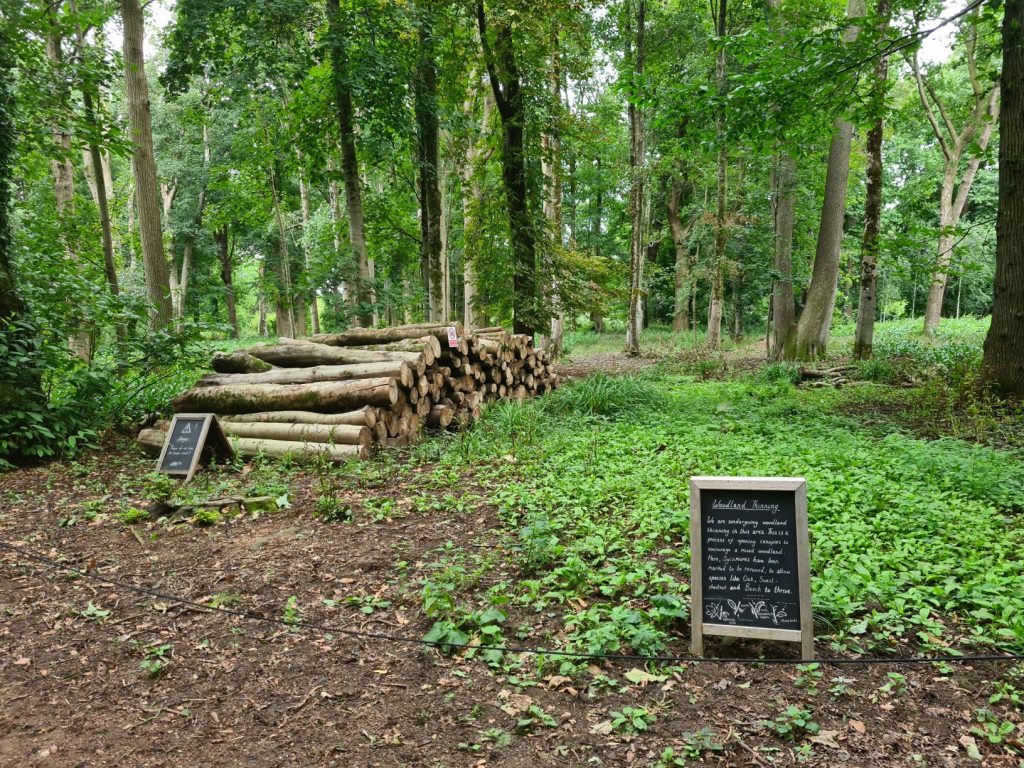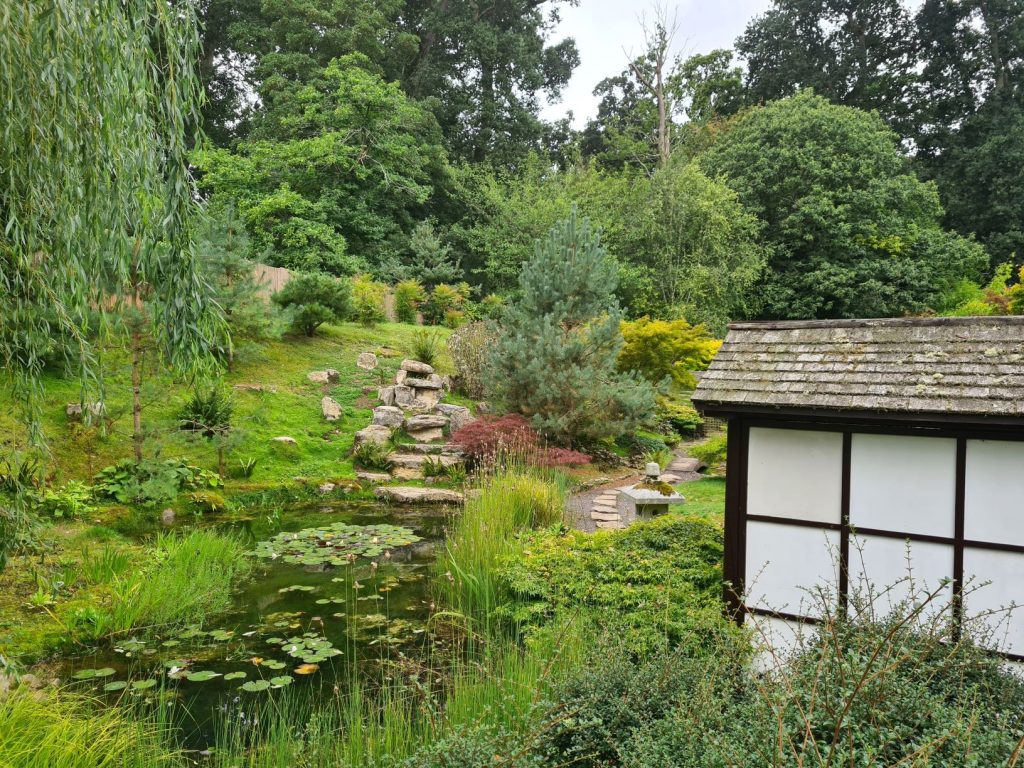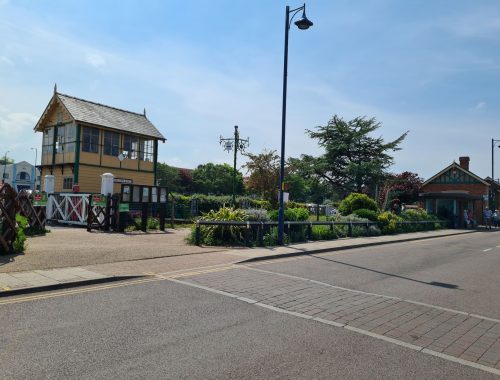Exploring the gardens of Kingston Lacy
Kingston Lacy was the final attraction that Dan, Ted, and I visited on our trip to Dorset in summer 2020. It was a fairly miserable day, and we were expecting a lunch time downpour, so we booked a slot to enter the estate as soon as it opened.
We first started to make our way to the garden, then realised that we were heading towards the only zone in the estate where dogs were not allowed. It’s slightly disappointing, as I’m sure the gardens of Kingston Lacy would be simply beautiful. Especially if the courtyard by the toilets and café were anything to go by!
Related: Ightham Mote

Instead, we aimed for the Japanese Garden and started our walk across the meadow in front of the entrance to the house. The house itself has a hectic history. The original house was left in ruins in the 1600s, as the owners also looked after Corfe Castle, which was attacked by Parliamentarians in the Civil War. By the 19th century, the present house was in stages of building, and was in the hands of William John Bankes, who collected a number of the items that now are displayed in the house. Unfortunately, due to Covid, we didn’t get to see any. Even more unfortunate was the fate of Bankes – he fled the UK for Italy as a result of a homosexual scandal, which could have resulted in his death; he never saw the house again.
The dog-friendly path surrounding the house led us off a clear track, and along a strip of large trees. The map refers to the area as ‘Cedar Avenue’ so I had to assume that they were vast cedar trees, clearly homes for a collection of local wildlife – many had knots and holes, perfect for birds and squirrels.
Related: The best dog-friendly things to do in Dorset
We soon reached a denser, wooded area. The air was heavy and damp. Hundreds of scents seemed to mingle, so much so that I couldn’t identify one specific smell. Ted seemed to love it – the boy sniffed at everything he could, so our walk slowed drastically.

On the plus side, it meant that we were able to really embrace the sights and sounds of the area. One thing I spotted that I thought was really interesting was how the National Trust groundskeepers managed the growth of trees. At the time we visited, they had felled a number of sycamore trees to open up space for more variety to grow – something I’d never seen in action before.
We continued on our journey towards the Japanese Garden. In one clearing, an uncommon but familiar sounding call caught our attention. We looked up to see not one, not two, but three buzzards circling above us. For a moment, I thought they might have their eye on Ted as a tasty snack.

Thankfully, Ted survived, and we reached the Japanese Garden. Who knows whether you’re usually allowed to walk inside it – I couldn’t see an entrance. I thought it would be bigger than it was, so felt slightly disappointed. At least it was very pretty.
A few spots of drizzle meant that it was probably time to start making our way back to the car but as we came closer to the house, we spotted a small building in the distance. It transpired that the little structure was an old fashioned caravan, and inside was stacked with leaflets and activity sheets for children. I thought it was a thoughtful touch, especially during the restriction and fear of the Covid-19 pandemic.
It’s a shame we didn’t manage to enter the house and snoop around William John Bankes’ artefacts. At least we were able to enjoy a couple of hours walking through the Kingston Lacy estate before the rain set in. Definitely stick it on your itinerary for the next time you are in Dorset.

Did you like this post? Why not let me know what you thought by leaving me a comment below? Or, if you want to keep up to date with new posts and any other travel ideas or thoughts I might have, you could follow me on Twitter or Instagram instead.





2 Comments
Nic | Nic's Adventures & Bakes
Thanks for sharing your visit, I have been many times, I do hope to go again soon, glad you had a lovely time there 🙂
Georgia Alzapiedi
I’d definitely go back when it’s easier to get inside the house. I feel like I missed out on a bit of the experience.